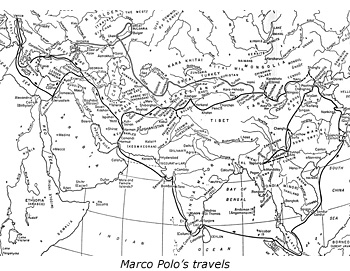|
|
|
Rarely have individuals ventured into the larger
world out of sheer, disinterested curiosity. Over the long run of history,
three interests in particular—empire, business, and mission—have
accounted for a great deal of foreign travel and attention that individuals
have devoted to lands beyond their own societies. In other words, individuals
have gone to great lengths to explore and study the larger world because
they sought knowledge that would enable them to maintain control over
subject lands and peoples, or because they sought knowledge of lands,
peoples, and resources that would help them establish profitable trade
and business relations, or because they sought understanding of foreign
cultural and religious traditions in order to combat them or co-opt them.
Empire, business, and mission are not the only reasons why individuals
have developed interests in the larger world: particularly in recent times,
personal, familial, and cultural interests have also figured prominently
as motives for visiting and understanding the larger world. In any case,
scholarship on travel accounts would do well to devote particular attention
to the motives behind travelers’ ventures into the larger world.

To mention a few examples: (1) Zhang Qian, the Chinese envoy who trekked through central Asia in the first century BCE, traveled as a representative of the emperor Han Wudi. The emperor sought allies to aid in his campaigns against the nomadic Xiongnu people. Zhang Qian did not find allies, but he brought back considerable intelligence about Xiongnu society, including its political and military organization. His travel account clearly reflected the imperial interests of the Han dynasty. (2) When Marco Polo traveled through central Asia and China, he reported fully on the textiles, gems, minerals, foodstuffs, natural resources, and manufactured goods that were available in the cities and territories he visited. No surprise that the travel account by this son of a merchant would reflect the interests of a businessman. (3) The Spanish Franciscan Bernardino de Sahagún went to Mexico in 1529 to convert the recently conquered native peoples to Christianity. Sahagún mastered the Nahuatl language, elicited information about native customs, and recorded the history and literature of local peoples. He paid close and respectful attention to his informants, but cross-cultural understanding was always a tool serving the needs of mission for Sahagún. His writings are the most important textual sources on native society in Mexico, but they would never have appeared except for Sahagún’s missionary efforts.
 
|




